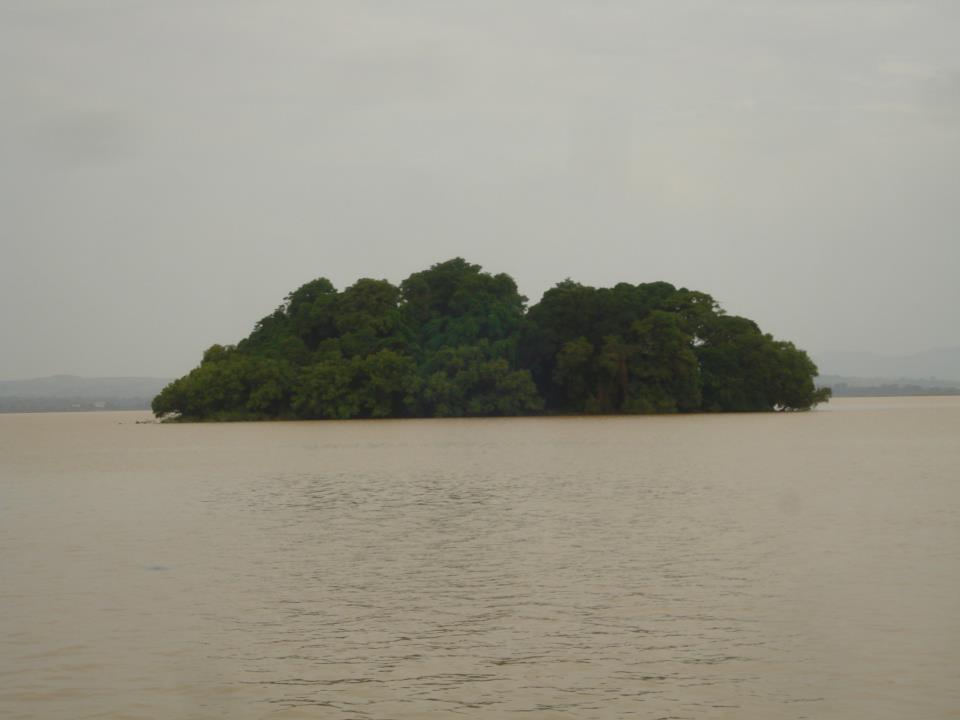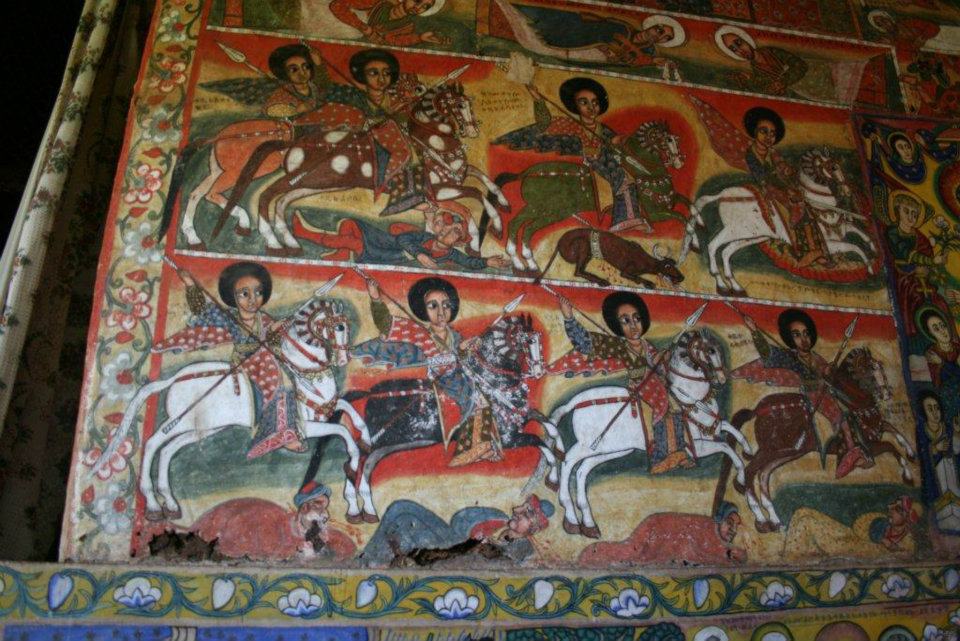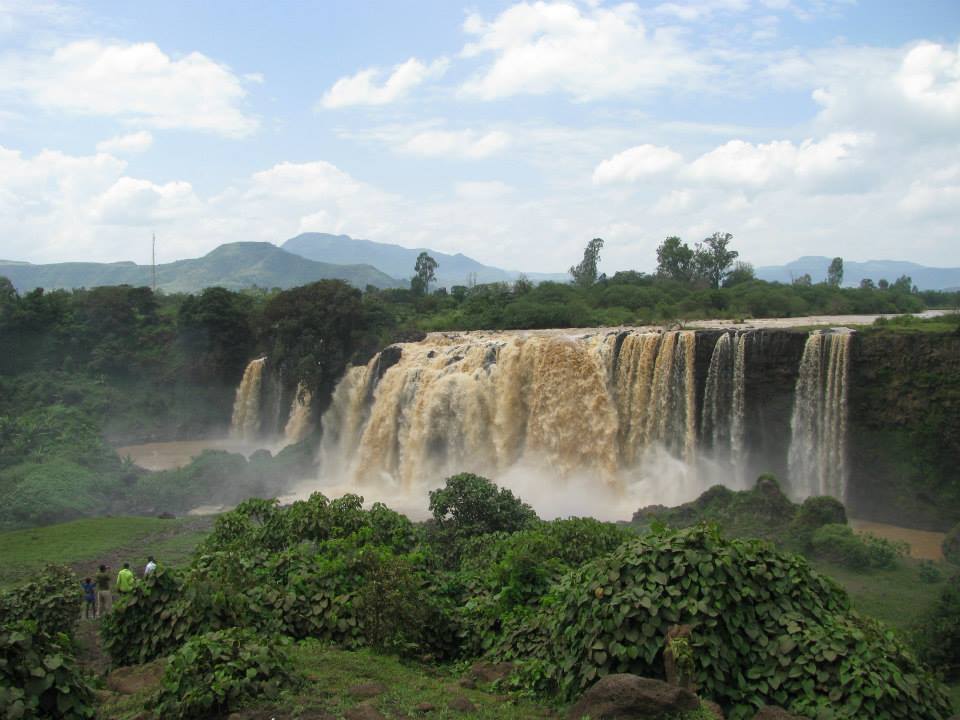Historical Tour of Ethiopia-North Ethiopia
AXUM-The origins of this ancient city are lost in legend. About one thousand years before Christ it is known that some tribes originally from southern Arabia settled on this side of the Red Sea; one of these tribes was known as the Habasciat (the possible origin of the name Abyssinia).
This particular area is however linked to the legend of the enchanting queen of Sheba, who, after having met King Solomon in Jerusalem, on her return gave birth to Menelik I, who was the founding father of the family known as the Kings of Kings. Local legend recounts how in the first century A.D., Axum was founded by the brothers Abreha and Atseha; it is not until midway through the fourth century that we have records of the first historical king, Ezana. The latter converted to Christianity after the arrival of Ferremnatos (Frumezio), who was sent by the patriarch of Alexandria and who later became the national saint, Abba Salame, Father of Peace.
Axum was the capital city of the longstanding Axumite kingdom, one of the most ancient African kingdoms, and represented a vital crossroads between Africa and Asia for almost a thousand years.
 |
| Fasildes Castle Compound- Gondar |
|
The ruins still visible in Axum stand as testimony to an exceptionally high level of civilization, notably the stone monoliths which are dotted throughout the city and are among the most mysterious monuments in the world. Axum is also the site of the church of Enda Mariam Zion, in front of which kings were crowned even as late as the last century. Inside, there are displays of golden crowns and crosses, the latter of which are still used during the major festivals of the Coptic church.
Legend has it that the original Ark of the Covenant is housed in a chapel near the church. The Ark is believed to have been brought back by the Queen of Sheba on her return from Jerusalem.
LALIBELLA- Located in the north-east of Ethiopia, Lalibela is another renowned historical destination. Placed third in historic sequence, its site hosts the “eighth wonder of the world”, the Lalibela rock-hewn churches. UNESCO has recorded this site as one of the world wonders. It is also holy land for Ethiopia's Orthodox Christians.
 |
| Zege Peninsula-The largest Peninsula on Lake Tana hosese the famous churches of Ura Kidanemihret and |
|
 |
| Bete Giorgis- St. Gerorge Church of Lalibella |
|
Today the town of Lalibela hosts eleven rock-hewn churches and all, apart from their historic significance, are renowned for their excellent and unique rock-carvings. The art displayed on the rocks dates from the twelfth century yet is still intact and in great shape. An active pilgrim site, the town is extensively visited and a source of admiration for architects and tourists alike.
Founded at the center of the Lasta mountain chain, Lalibela was originally called Roha and was a site of the Zagwe dynasty, of the Agew people. The decline of the Axumite dynasty gave rise to the Zagwe dynasty and, as a result, power shifted southward from Axum. After an interruption of the Solomonic line for almost 12 years, King Lalibela III, from the last of the Zagwe dynasty, managed to have these rock-hewn churches carved.
 |
| Mural at Ura Kidanmiheret Monastery of Lake Tana |
|
It took King Lalibela his entire reign and more than 60,000 men to finish the work. According to local accounts, the work was assisted by angels. Other erected and cave churches built during this period are found at a short distance from the town.
GONDAR- Gondar is the 17th-century capital of Ethiopia. Bordering Sudan and located on the northern shore of Lake Tana, it is one of the prominent historical areas in Ethiopia.
Officially founded by King Fasiladas in 1632, the Gondarine period is considered to be the third major dynasty after the Axumite and Zagwe dynasties. The dynasty is historically important for the renaissance king's mobile camp and the introduction of a permanent capital. The attempt by King Fasiladas to end the Zagwe dynasty was successful and set Gondar as Ethiopia's capital from 1632 to 1868.
Gondar's 17th century castles reflect the strong dynasty and the power of progressive rulers. The biggest and most magnificent castle of all, King Fasiladas' castle, which is still intact, was the first to be built. Seven of the dynasty's kings had their own castles built to show their power and independent, efficient ruling styles. What is special about the castles is that they demonstrate the progress in Ethiopian building styles and follow on from the rock-building traditions of the Axumite and Zagwe kings.
Additionally, Gondar was and is still noted as an active religious center. Among the churches in town, Debre Berhan Selassie is famous for its typically Gondarine style and its ceiling.
BAHIRDAR- is the pleasant city, its avenues lined with palm trees and plants. It sets on the south eastern shore of lake Tana (Ethiopia’s largest lake), where local fishermen still use papyrus boats, and just 30km from the spectacular Tiss Isat Falls. Here the blue Nile creates” Smoking Water” an awe-inspiring sight as it plunges in to the gorge below. From Bahirdar you must explore some of the ancient monasteries that were built around Lake Tana, or on the many islands. These includes Deke Estifanos with its priceless collection of icons, as well as the remains of several medieval emperors, Kebran Gabriel (closed to women), and Ura-kidane Mehret with its famous frescoes. The colorful local market at Bahir Dar is renowned for its weaver’s baskets and wood workers.
 |
| The Majestic Blue Naile Falls |
|
HARAR- (The Holiest Muslim City)- Harar is one of the most impressive Ethiopia’s historic destinations pulls remoteness and ancient history as part of the long and colorful existence of the country, Ethiopia.
Located strictly East of Ethiopia it has survived since the late first millennium BC being a strong hold of Islam. Happen to be a strong Muslim sultanate, Harar has been ruled by seventy two successive Imams since its formation i.e. 1900s till Mid 1500s through which time quite unique, strong and authentic Muslim tradition was created. As it has a vast territory, friendly tribes namely Adare, Somali, Oromo and Argoba are the main settlers with all Muslim background.
It for long time had long trade relation with the Mediterranean and Arab world and religious interaction with the Middle East over Indian ocean and red sea which pays a great deal of contribution for its Economic and especially religious growth. Indeed the Sultanate has a lose but continuing contacts with the mid and North Christian Kingdom of the country through trade till it defuses and administration falls under the central governing Kingdom in mid 1500s. From here onwards Harar has opened the second phase in history being an ideal example of religious integrity with brotherly Christians and survived a new mix of tradition sustained to this day. Surrounding the old town, Harar today is a big capital city in the Eastern part of Ethiopia.
Today, Harar, next to Mecca, Medina and Jerusalem is one of the main Muslim pilgrim sites in the world. Harar’s most determined attraction, the old and walled town of Harar, was particularly established in 1540’s following the downfall of the Imams’ rule with the defeat of the strongest Imam who ruled Harar. The Long and destructive war launched by this Imam, locally named Ahmed the left hander, to the Christian Kingdom and its gradual failure forced the town residents to built a great wall around the town to protect themselves from any possible attack from surrounding tribes. In this walled and old town, more than 90 mosques are built and are still service active. And with all its uniqueness, the town is known by locals as “Jegol”, a name everybody notices.
It also worth a visit to the unique attraction of Harar, also could be mentioned a special tradition of just a selected family members in Harar, to feed the wild Hyenas in a daring close to mouth close manner. It gives the glimpse that Harar’s people friendly enough to domesticate wilds.
It’s an amazing fact that driving off the main town Harar South wards, one will face a real fact of unique 1000 years old tradition and way of life which makes Harar to be a cultural destination as well. It will take full day excursion to visit the stone and mud built houses in a round and rectangular shaped manner all identically designed and Muslim tradition tuned interior decorations. Scattered through the most beautiful highlands of Harar, and owned by the most welcoming peoples of Harar is an ideal exploring through the first Millennia history and culture indeed gives an ideal trekking option through its splendid scenery.
House styles and interior decorations are unique to Harar. The house of the 19th-century French poet, Arthur Rimbaud, is one of the most preserved in this town. Every house in Harar has almost the same inside partitions and all are colorfully decorated with traditional utensils. With its more than 40 mosques, Harar is home to the friendliest people in Ethiopia.
More travel products/services from Untouched Ethiopia Tours
 | 21 Mar 2016
The Afrar Depression- Danakil Depression |
|
 | 18 Mar 2016
Semien Mountains Trekking |
|
 | 18 Mar 2016
Guassa Community Trekking |
|
 | 30 Jan 2016
Ethiopia Omo Valley Tribes Tour |
|
|
| | |